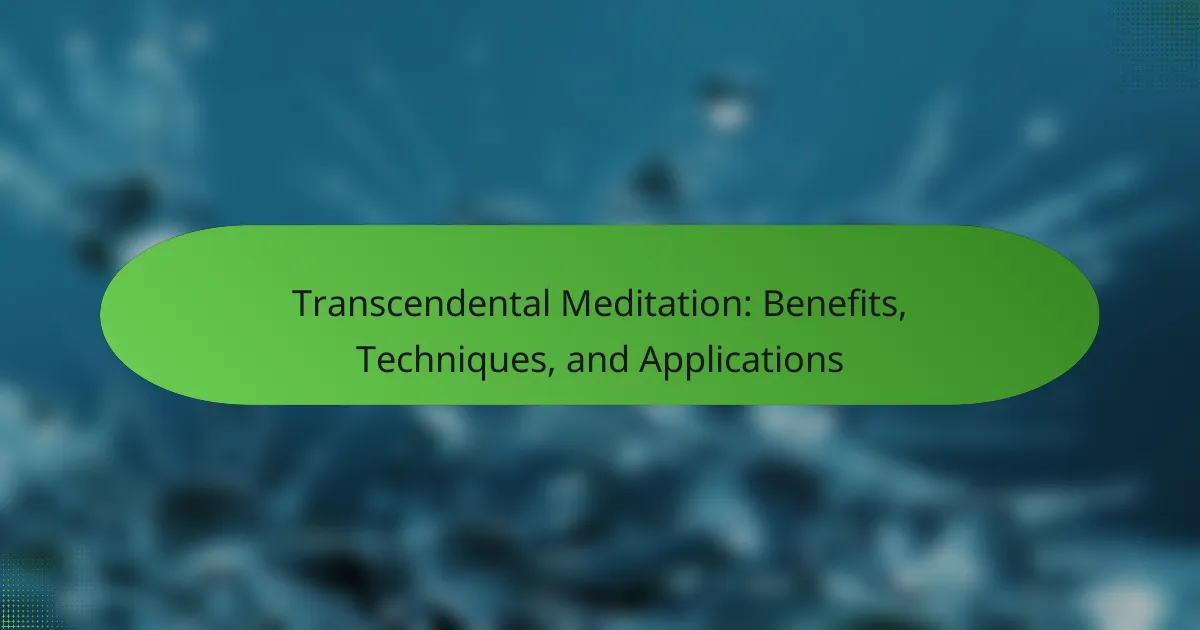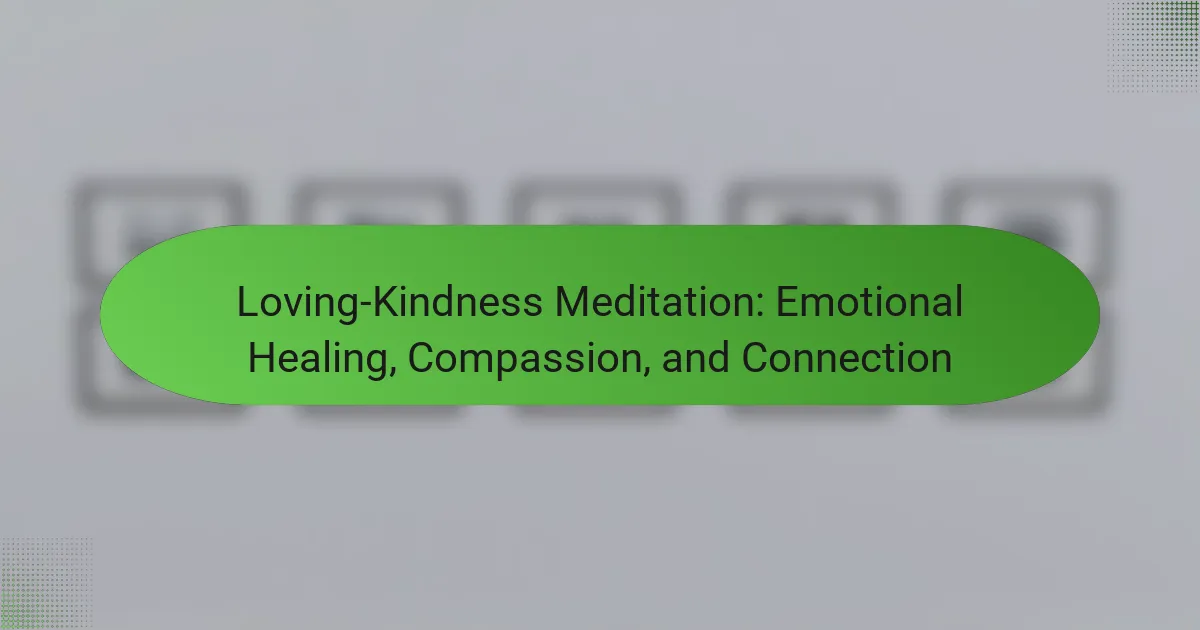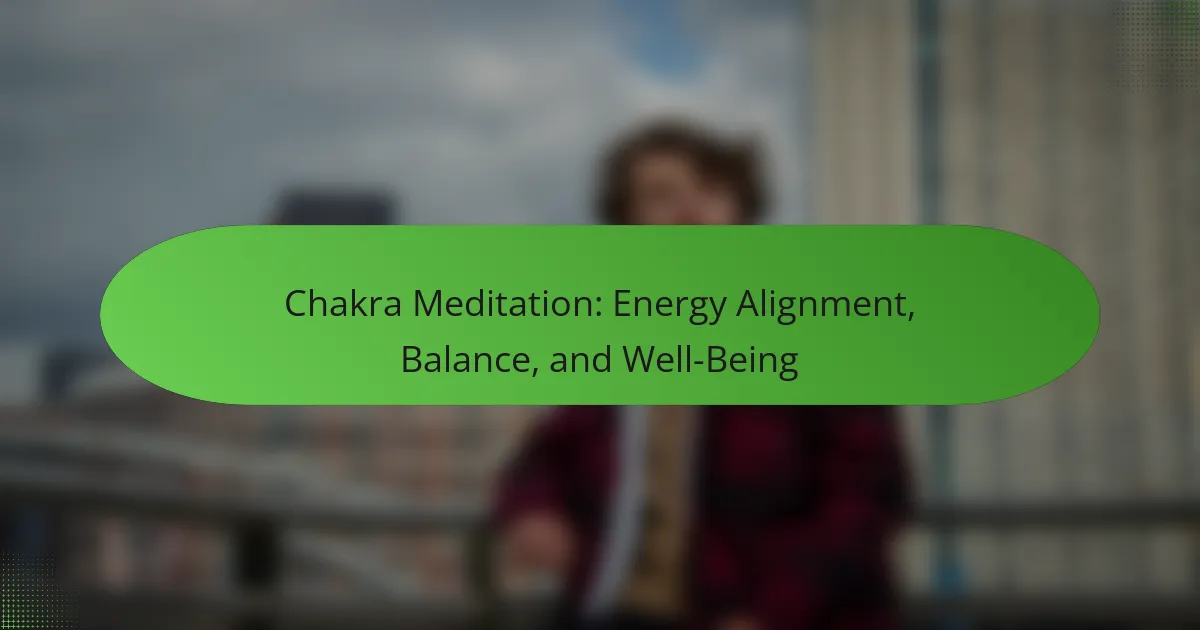Transcendental Meditation (TM) is a simple yet powerful technique that promotes mental clarity, emotional stability, and physical well-being. By dedicating just 20 minutes twice a day to practice with a specific mantra, individuals can experience significant reductions in stress and enhanced focus. This method emphasizes consistency and relaxation, making it accessible for everyone seeking to improve their quality of life.
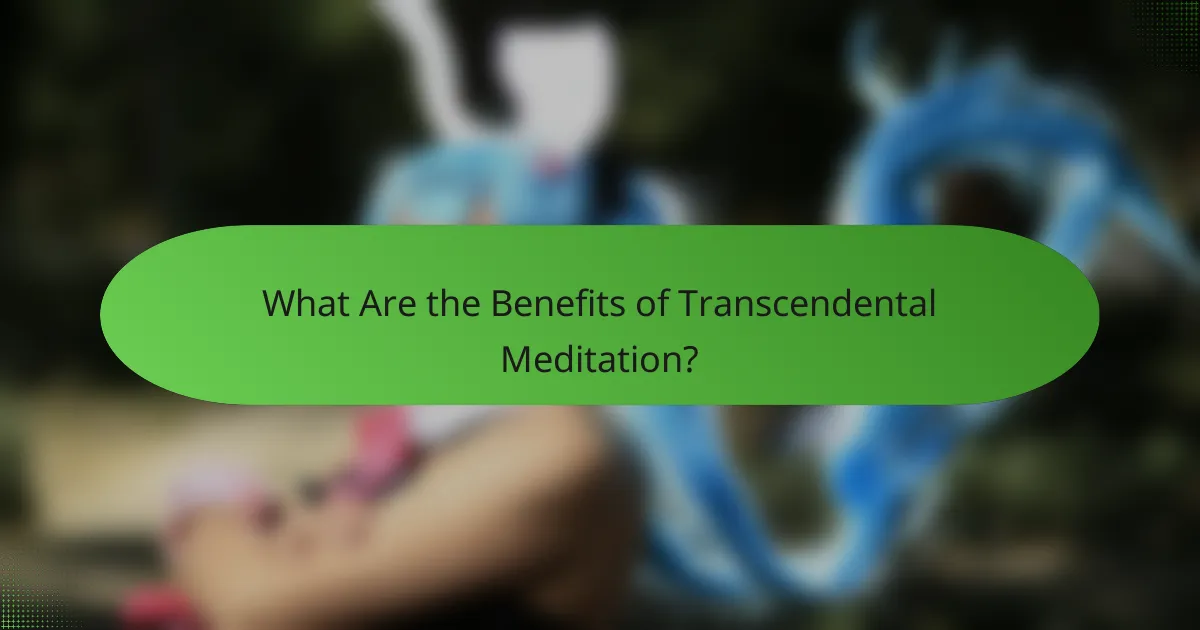
What Are the Benefits of Transcendental Meditation?
Transcendental Meditation (TM) offers a variety of benefits that enhance mental, emotional, and physical well-being. Practitioners often experience reductions in stress, improved focus, and greater emotional stability, making it a valuable practice for many individuals.
Reduces stress and anxiety
One of the primary benefits of Transcendental Meditation is its ability to significantly reduce stress and anxiety levels. Regular practice can lead to lower cortisol levels, the hormone associated with stress, helping individuals feel more relaxed and centered.
To effectively manage stress through TM, aim for at least 15-20 minutes of practice twice daily. This routine can create a calming effect that persists throughout the day, allowing for better coping mechanisms in stressful situations.
Improves focus and concentration
Transcendental Meditation can enhance focus and concentration by training the mind to settle into a state of deep rest. This practice helps clear mental clutter, making it easier to concentrate on tasks and improve productivity.
Incorporating TM into your daily routine can lead to noticeable improvements in attention span and cognitive function. Many practitioners report being able to maintain focus for longer periods, which is beneficial in both academic and professional settings.
Enhances emotional well-being
Practicing Transcendental Meditation can lead to improved emotional well-being by fostering a greater sense of inner peace and resilience. This practice encourages self-awareness, allowing individuals to better understand and manage their emotions.
Regular TM practice can help reduce symptoms of depression and anxiety, contributing to a more positive outlook on life. Many individuals find that they experience increased feelings of happiness and fulfillment as a result of their meditation practice.
Promotes overall health
Transcendental Meditation is linked to various health benefits, including lower blood pressure and improved cardiovascular health. By reducing stress and promoting relaxation, TM can contribute to better overall physical health.
To maximize health benefits, consider combining TM with a balanced diet and regular exercise. This holistic approach can enhance the positive effects of meditation and support long-term wellness.
Increases creativity
Engaging in Transcendental Meditation can stimulate creativity by allowing the mind to access deeper levels of thought. This practice encourages divergent thinking, which can lead to innovative ideas and solutions.
To harness creativity through TM, practice regularly and allow your mind to wander freely during sessions. Many artists and professionals find that their creative output increases significantly after establishing a consistent meditation routine.
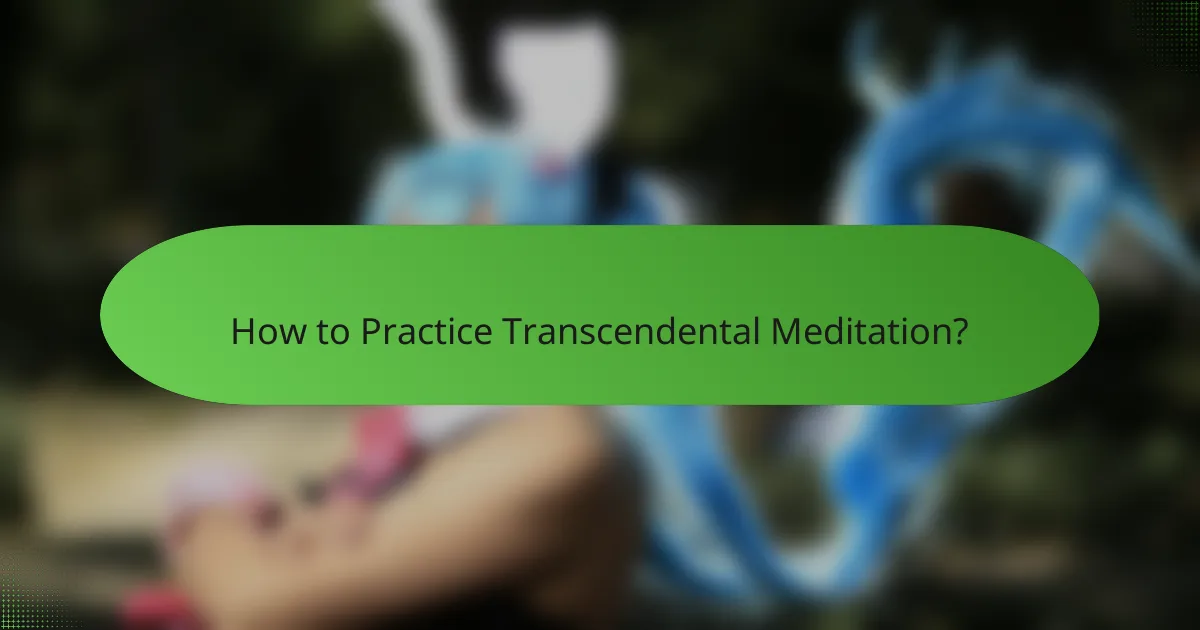
How to Practice Transcendental Meditation?
To practice Transcendental Meditation, find a quiet space, use a specific mantra, maintain a comfortable position, and dedicate about 20 minutes to the practice twice daily. This technique emphasizes simplicity and consistency to promote relaxation and mental clarity.
Find a quiet space
Selecting a quiet space is crucial for effective Transcendental Meditation. Choose a location free from distractions, such as noise or interruptions, to help you focus inward. This could be a room in your home, a garden, or any peaceful environment where you feel comfortable.
Consider using soft lighting and minimal decor to create a calming atmosphere. The goal is to establish a personal sanctuary that signals to your mind that it’s time to meditate.
Use a mantra
A mantra is a specific sound or phrase that you silently repeat during meditation. This helps to anchor your thoughts and facilitate a deeper state of relaxation. Typically, mantras are chosen based on personal resonance and can be provided by a certified instructor.
When selecting a mantra, ensure it is simple and easy to remember. The repetition of the mantra allows your mind to settle, reducing distractions and enhancing your meditation experience.
Maintain a comfortable position
Comfort is key in Transcendental Meditation, as it allows you to focus on your mantra without physical discomfort. You can sit on a chair, cushion, or floor, ensuring your back is straight but relaxed. The position should allow you to remain alert yet comfortable.
Experiment with different postures to find what works best for you. Avoid positions that may cause strain or fatigue, as these can detract from your meditation practice.
Practice for 20 minutes twice daily
For optimal benefits, practice Transcendental Meditation for about 20 minutes, twice a day. This duration is generally sufficient to achieve a state of deep relaxation and mental clarity. Consistency is essential, so try to meditate at the same times each day.
Many practitioners find early morning and late afternoon or evening to be ideal times. Setting a timer can help you stay focused without worrying about the clock, allowing you to fully immerse yourself in the experience.
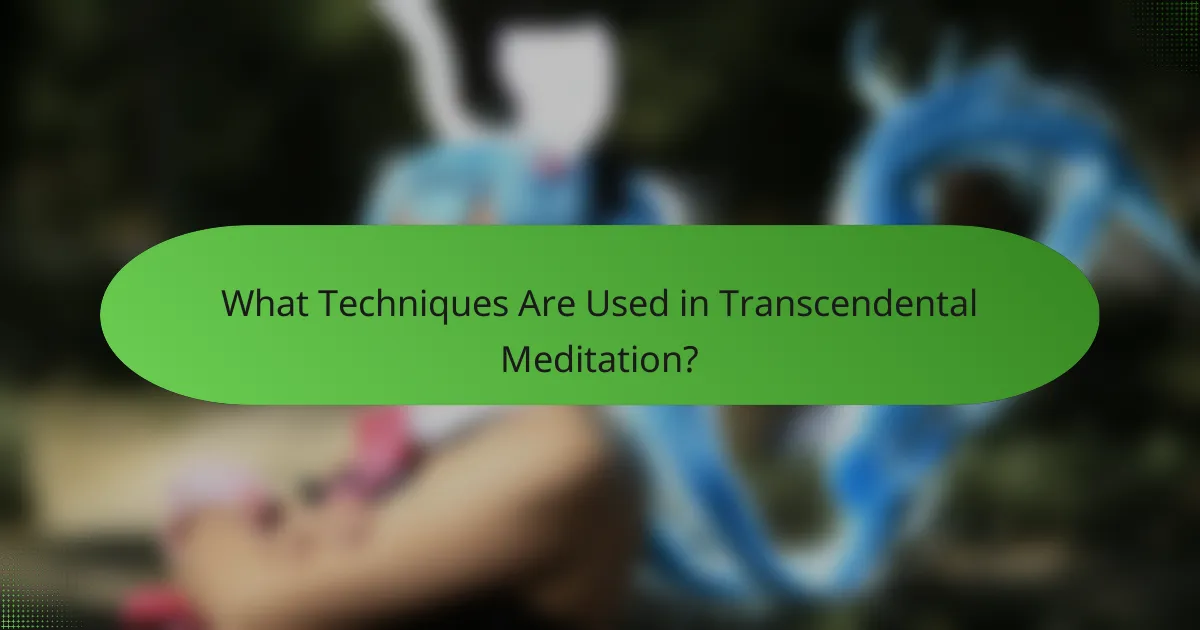
What Techniques Are Used in Transcendental Meditation?
Transcendental Meditation (TM) employs specific techniques designed to promote deep relaxation and mental clarity. The primary methods include mantra repetition, guided meditation sessions, and personalized instruction, each contributing to the overall effectiveness of the practice.
Mantra repetition
Mantra repetition is a core technique in Transcendental Meditation, where practitioners silently repeat a specific sound or word, known as a mantra. This practice helps to focus the mind and transcend ordinary thought patterns, facilitating a state of restful awareness.
Typically, mantras are chosen based on personal suitability and are not meant to have specific meanings. This allows the practitioner to engage with the sound itself, promoting a deeper meditative experience.
Guided meditation sessions
Guided meditation sessions in TM often involve listening to an experienced instructor who leads the practitioner through the meditation process. These sessions can help beginners understand the practice and establish a routine.
During these sessions, the instructor may provide insights on maintaining focus and overcoming common distractions, making it easier for practitioners to enter a meditative state. Regular participation in guided sessions can enhance the overall experience and effectiveness of TM.
Personalized instruction
Personalized instruction is essential in Transcendental Meditation, as it ensures that each practitioner receives tailored guidance suited to their individual needs. This typically occurs during an initial training session with a certified TM instructor.
Through personalized instruction, practitioners learn how to select their mantras and develop a meditation routine that fits their lifestyle. This individualized approach can significantly improve the likelihood of success in achieving the desired benefits of TM.
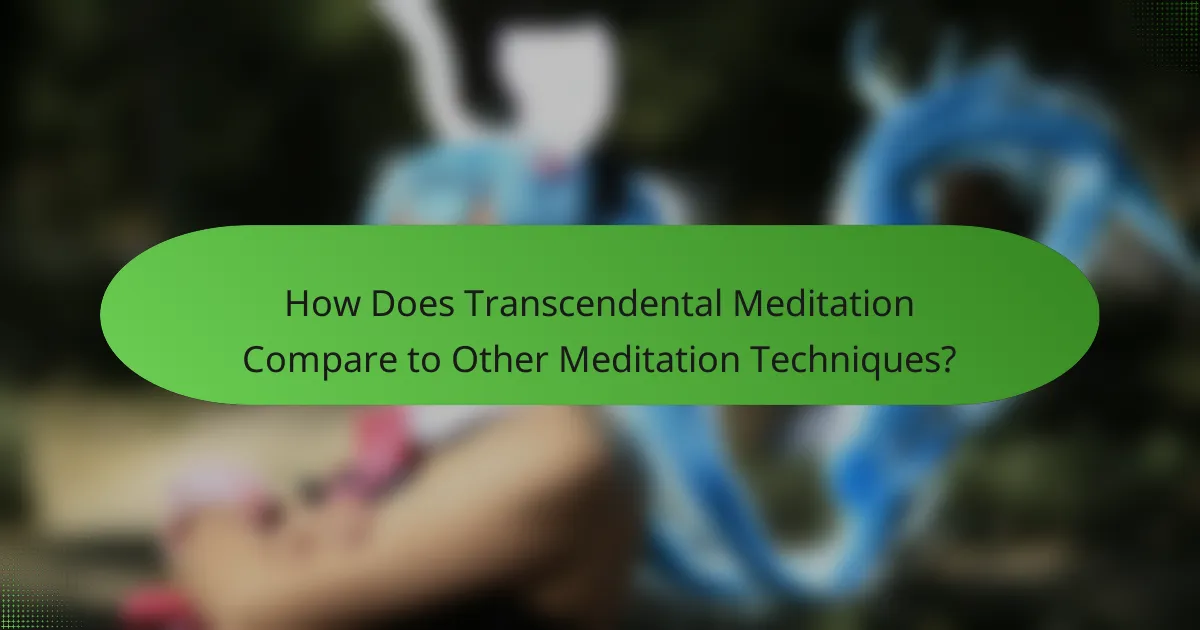
How Does Transcendental Meditation Compare to Other Meditation Techniques?
Transcendental Meditation (TM) is distinct from other meditation techniques due to its specific practice of silently repeating a mantra for about 15-20 minutes, twice a day. This method aims to settle the mind into a state of profound rest and relaxation, differentiating it from techniques that may focus more on mindfulness or guided imagery.
Differences from mindfulness meditation
Mindfulness meditation emphasizes awareness of the present moment and often involves observing thoughts and feelings without judgment. In contrast, TM focuses on transcending thought through the use of a mantra, which allows practitioners to experience a deeper state of rest. While mindfulness can be practiced in various settings, TM typically requires instruction from a certified teacher to ensure proper technique.
Another key difference is the duration of practice; mindfulness sessions can vary widely, from a few minutes to an hour, while TM is standardized at about 15-20 minutes, twice daily. This structured approach can appeal to those seeking a consistent routine.
Comparison with Zen meditation
Zen meditation, or Zazen, involves seated meditation with an emphasis on posture and breathing, often requiring practitioners to observe their thoughts without attachment. TM, however, uses a mantra to facilitate a different kind of mental experience, aiming for a state of restful awareness rather than focused observation. This can make TM more accessible for beginners who may find the discipline of Zen meditation challenging.
Additionally, Zen meditation can be practiced in longer sessions, sometimes lasting over an hour, while TM’s shorter, more frequent sessions may suit those with busy schedules. Both practices offer unique benefits, but the choice often depends on personal preference and lifestyle.
Benefits over guided visualization
Guided visualization typically involves following a narrative or imagery led by an instructor, which can engage the imagination but may not provide the same depth of rest as TM. In TM, the silent repetition of a mantra allows the mind to settle more deeply, potentially leading to greater physiological benefits such as reduced stress and improved focus.
Moreover, TM can be practiced independently without the need for external guidance, making it more flexible for individuals who prefer self-directed meditation. While guided visualization can be beneficial for creativity and relaxation, TM’s structured approach may yield more consistent results in achieving a meditative state.
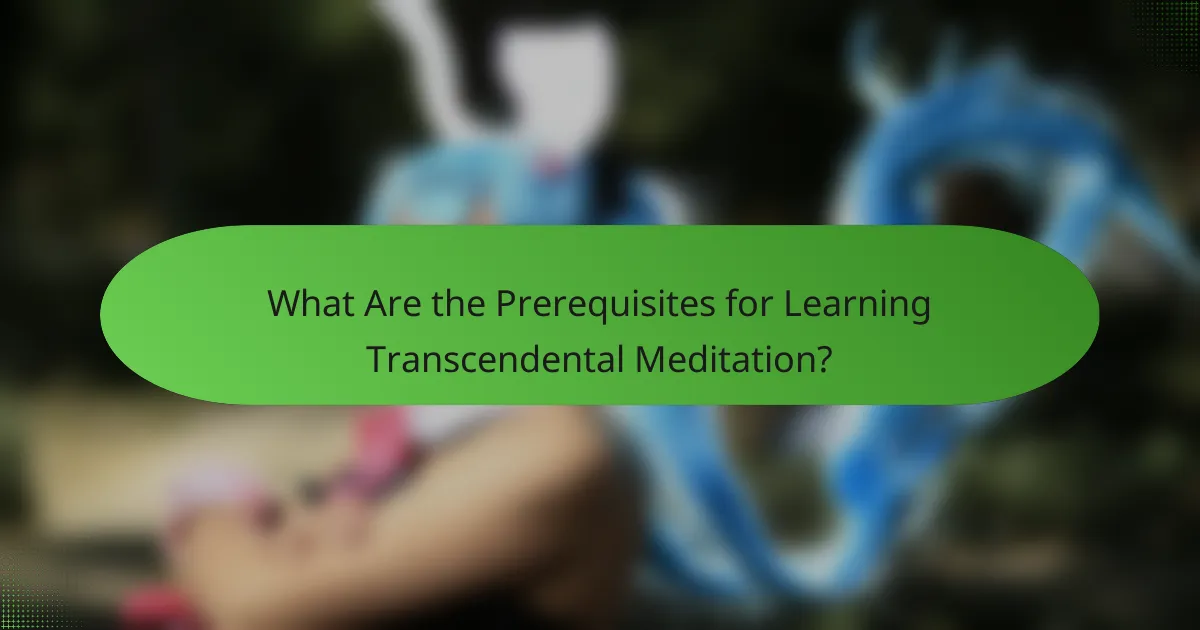
What Are the Prerequisites for Learning Transcendental Meditation?
To learn Transcendental Meditation (TM), individuals need a willingness to learn, access to certified instructors, and a commitment to regular practice. These prerequisites ensure that practitioners can effectively engage with the technique and experience its benefits.
Willingness to learn
A genuine willingness to learn is essential for anyone starting with Transcendental Meditation. This mindset fosters openness to new experiences and the discipline required to practice regularly. Individuals should approach TM with curiosity and a readiness to embrace its principles.
Being open to learning also means being patient with oneself. Mastery of TM may take time, and a positive attitude can significantly enhance the learning experience.
Access to certified instructors
Access to certified TM instructors is crucial for effective learning. These instructors provide personalized guidance, ensuring that practitioners understand the technique correctly. They also help address any questions or challenges that may arise during practice.
In many regions, TM organizations offer courses led by trained professionals. It is advisable to seek out these certified instructors to gain the most from the practice.
Commitment to regular practice
Commitment to regular practice is vital for reaping the benefits of Transcendental Meditation. Practitioners typically meditate for about 15-20 minutes twice a day. Consistency in practice helps deepen the experience and enhances the overall effectiveness of the technique.
To maintain this commitment, setting a specific time for meditation each day can be helpful. Creating a dedicated space for practice can also encourage adherence to the routine, making it easier to integrate TM into daily life.
